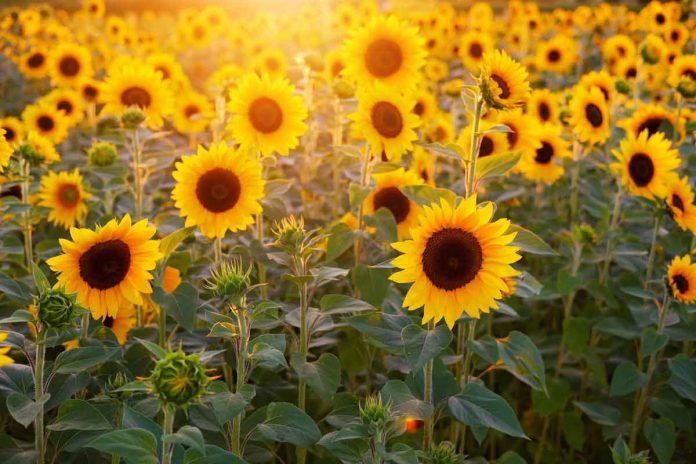According to a new UBC research, the ultraviolet colours of sunflowers not only attract pollinators, but also help the plant regulate water loss.
The dense collection of yellow petals of a sunflower has an ultraviolet bullseye pattern which is invisible to humans but not to most insects including bees.
Bullseye patterns improve the attractiveness of flowers to pollinators and increase their visibility. UBC researchers have also found the same molecules which produce UV patterns in sunflowers. These are also involved in helping the plant respond to stresses like drought or extreme heat. The study has been published in eLife. The study provides clues to how plants can adapt to different climates.
Scientists grew 2,000 wild sunflowers of two species at the university in 2016 and 2019. They have measured the sunflowers’ UV patterns. They also analysed the plants’ genomes. They found that wild sunflowers from different parts of North America had UV bullseyes of very different sizes. Some bullseye was a thin ring and others covered the whole flower. Bees frequently visited larger bullseyes.
Scientists found a single gene named HaMYB111, was responsible for most of the diversity in floral UV patterns. It controls the production of UV-absorbing flavonol compounds. These are known to help plants survive under different environmental stresses. Larger floral UV patterns have more of these compounds. This helps in reducing the amount of evaporation from a sunflower in environments with lower humidity. In hot environments, smaller UV patterns promotes evaporation which keeps the plant cool.
Sunflowers are cultivated for various reasons such as to produce sunflower oil. This has US $20 billion-dollar industry in 2020. The study can help to add knowledge about how to attract pollinators which will eventually increase crop yields.
Scientists will also have a better understanding of HaMYB111 regulates the size of UV bullseyes. They will also examine in more detail about how those patterns affect plant physiology and how flavonol compounds affect water loss.
Flavonoids are a class of polyphenolic secondary metabolites found in plants, and thus commonly consumed in the diets of humans.

